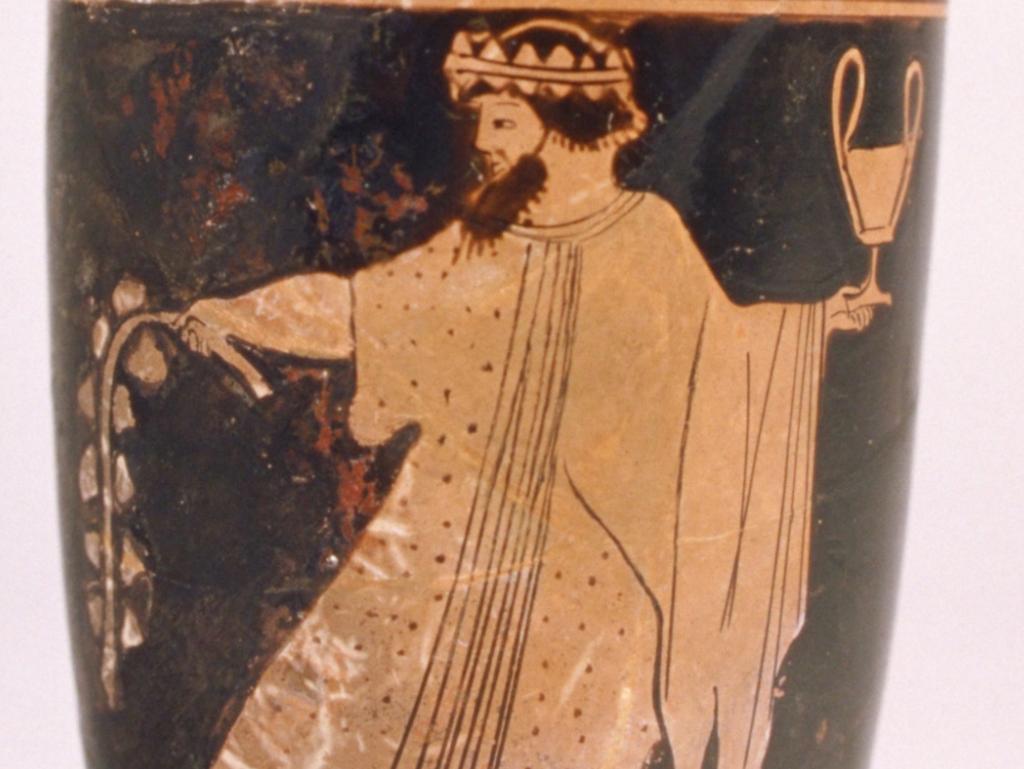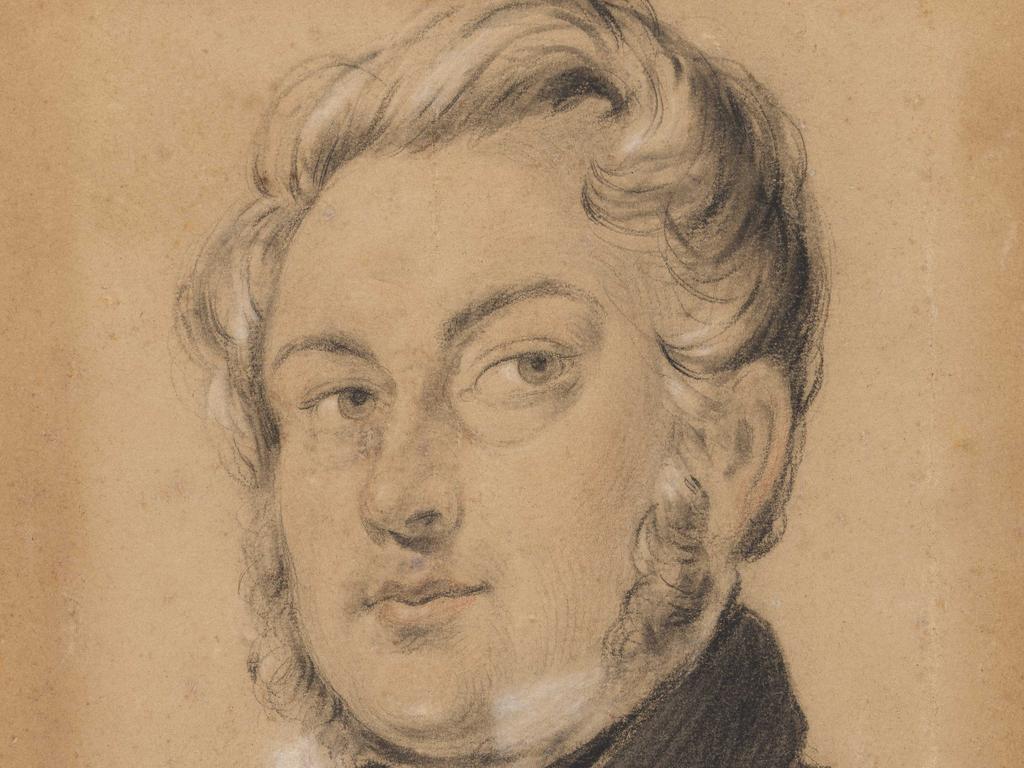Artwork of a banana taped to a wall with duct tape coming to Melbourne
The artwork called Comedian, by Italian artist Maurizio Cattelan, was sold for $US150k. Now it will be staged at the NGV – as per a manual on how staff should fix the fruit to the wall.
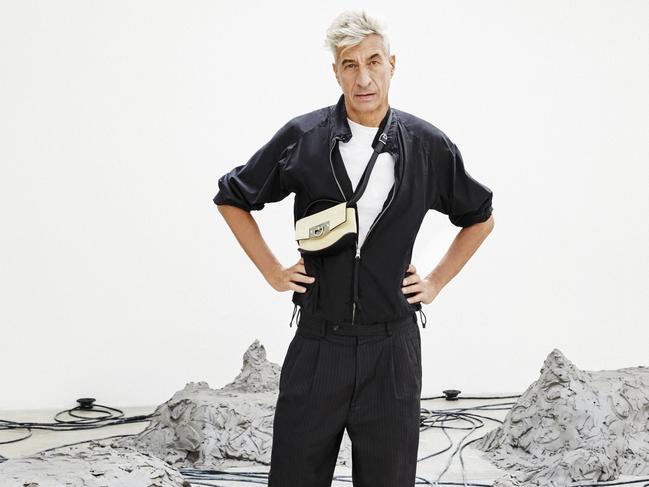
He’s the jokester who turned the art world on its head by duct-taping a banana to a wall. Now Maurizio Cattelan is bringing his controversial work Comedian (2019) to the National Gallery of Victoria for its anticipated Triennial exhibition in December.
The Italian artist, who spends his time between Milan and New York City, has gained notoriety for his polarising satirical installations La Nona Ora (The Ninth Hour, 1999), a wax statue depicting Pope John Paul II being hit by a meteorite, and America, a fully functioning 18-carat gold toilet, placed in the Guggenheim Museum’s bathroom, which later mysteriously was stolen.
Is there any distinguishing Cattelan, the man, from Cattelan, the artist? Review meets the enigmatic provocateur and attempts to peel back the layers.
Stephanie Sekulovska: Perhaps your most well-known work, Comedian, is making its way to the NGV as part of the upcoming Triennial exhibition. At what point does a banana and duct tape on a wall become art?
Maurizio Cattelan: The status of “art” is a chameleonic label that shifts according to times, culture and subjective commentary of those who answer to the name of critics. I’d leave the banana and the duct tape as it is to personal interpretation. “WE VALUE YOUR FEEDBACK”, right?
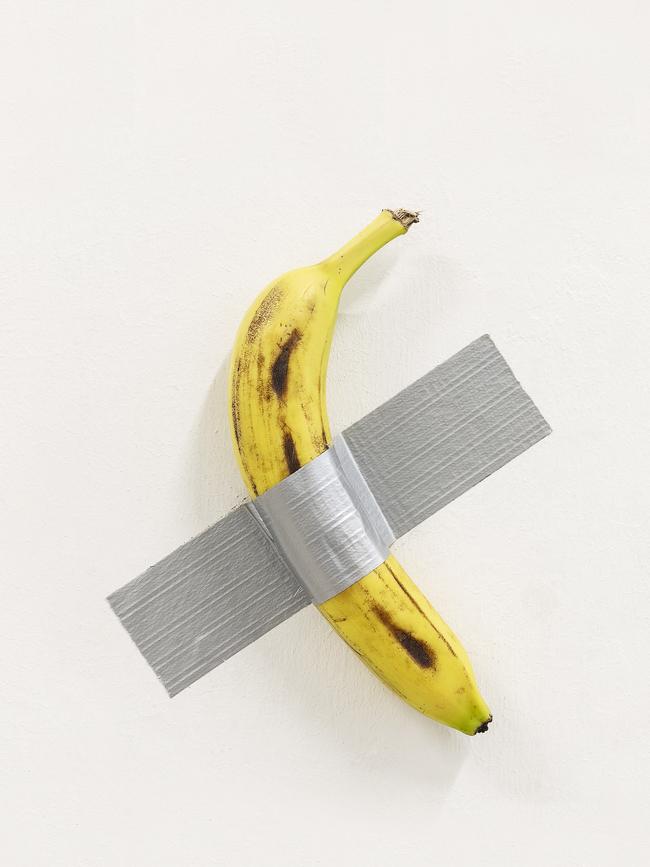
SS:So how do you feel about those who scoff at contemporary works like your own?
MC: As long as the unconventional pairing (of a banana and duct tape) is able to provoke, evoke and question, I’ll happily be a fly on that wall to hear them scoff.
SS:You have me intrigued – is it the banana or the duct tape that makes it a masterpiece?
MC: Unpeeling the mystery, aren’t we? The bondage was consensual, and the ending couldn’t have been happy if either was missing.
SS:I’ve heard the installation coming to the NGV is one of three editions to exist. How do you differentiate between them?
MC: Besides counting? The first is a gambling act. You can’t tell if it will backlash or generate flattering praise. The second is necessary as light in El Grieco’s “boy blowing on an ember”, since it keeps the conversation going once the tempers have cooled down.
SS: And what about the third?
MC: The third might just be what survives the previous two.
SS:When you loan the work you give curators an extensive instruction manual on its installation, including a gallery worker being entrusted to replace the banana every three to five days. What’s the secret to installing it successfully?
MC: This work requires nursing; it’s delicate as a goldfish. You can’t simply hang it on the wall and forget about it, it will get back at you staining the air with a scent of rotten tropical fruit. The instruction manual is there as a memo; the banana replacement should be done by caring hands.
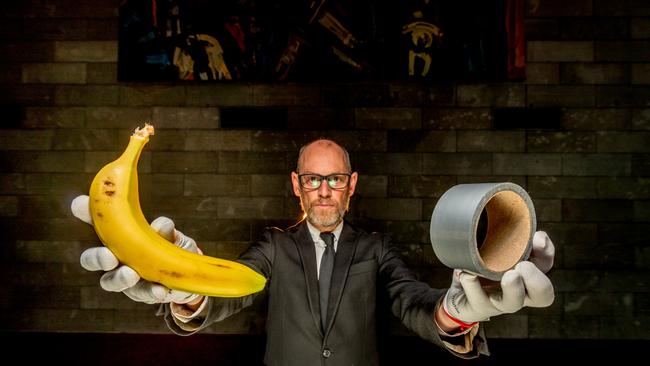
SS: Two gallery visitors – one in Miami and another in Seoul – have eaten the banana by taking it off the wall in past exhibitions. Is this just part and parcel of contemporary art?
MC: Talking about art consumption … I got a taste of my own provocations. Two installations eaten is a bit one too many, people might start thinking of the banana as an agent provocateur.
SS: Would you label your recent work, then, as socially engaged practice, in that the public’s interaction with your art often actualises its meaning?
MC: I would … to the extent that responsive public interactions and critical thinking are the apex of societal engagement. My creations are not meant to stay in a vacuum. They actualise their meaning by challenging the status quo and shaking the collective consciousness. Obviously, this can happen only when the audience goes beyond what meets the eyes and starts a conversation about it.
SS: Indeed, it’s been a very provocative and polarising piece of art. The original Comedian sold for $US120k in 2019; a subsequent version sold for $US150k. How important is the act of purchasing to the meaning of this work itself?
MC: Answering is probably against my personal interest. Surely, since the times of bartering, things have changed a little. Value is no longer assigned based on intrinsic worth; coins are no longer made of precious metal. Nowadays, we buy items that only exist in virtual reality and spend astronomical amounts on white T-shirts with a branded logo. Things of true value are priceless, but as long as ideas remain free there is no reason to worry.
SS: The idea of artist-as-provocateur arguably is becoming more popular in the mainstream. How do you feel about that?
MC: Perhaps tastes are evolving and within our overly crowded world, we need dissonance to feel alive. Predictability is reassuring and safe, just like the ending of a movie you’ve already seen. Yet, with the limitless amount of information available and connection possibilities, curiosity and dialogue often find a stronger spark in provocations and challenges of conventional norms. Art comes in handy for this.
SS: You’ve described yourself as more an “art worker” than artist. How does that sentiment fit in with what you’ve just described?
MC: Describing oneself is as baffling as the health warning labels on cigarette packages. If I knew how to, I’d like to be outspoken. Nevertheless, reconciling your authentic self with the tendency to please others and the fear of external judgement is quite a mess. “Artist” would increase my sex appeal, it would probably wake Caravaggio up from the grave, and it certainly would burden my works with a different meaning. “Art Worker” simply implies a relationship between the two. Broadly, I work with art; let others say to what extent.
SS: So when your art is placed among some of the contemporary “greats” does it undo the very point you’re trying to make?
MC: More than trying to make points, I try to make waves. A punctuation mark implies the ending of a matter, and I’d rather be on pins and needles in the middle of a story. Regardless of the art’s placement, when mainstream acknowledgments dilute the spirit of provocation, it’s time to turn the page.
SS: I suppose Banksy’s street art has come across a similar dilemma of teetering on the edge of mainstream. Do you see likeness in your artistic aims?
MC: Ah, Banksy! I have a soft spot for his storytelling on urban canvases. Can’t really speak about his purpose, however we both clearly share an undying restlessness when it comes to settling for the ordinary.
SS: How do you feel about his anonymity?
MC: A masked vigilante sounds quite intriguing, yet I can’t fathom why on earth he would willingly give up a little fame! Not to mention how nerve-racking it must be to create graffiti in plain sight, without arousing people’s curiosity around his hooded figure.
SS: Speaking of arousing curiosity ... Earlier this week four men were charged in the alleged theft of your toilet installation, America, which was stolen from the UK world heritage site Blenheim Palace in September 2019. Without enlisting your legal team, can you confirm or deny if you had any part in the heist?
MC: Sorry, can’t do. My legal team made me endlessly repeat that I have the right to remain silent. But let me tell you, if only we had placed the toilet in the women’s bathroom considering they travel in pairs, we would surely have had at least a couple of witnesses.
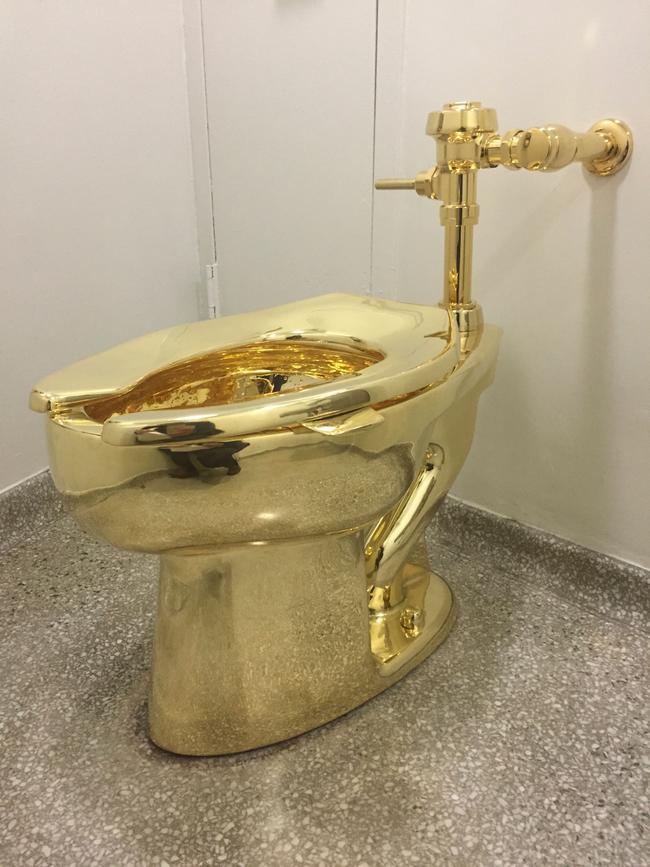
SS: Like the editions of Comedian, you’ve said there are three gold toilets in existence. Where might one find the other two?
MC: I could tell you, but you might want to refrain from that gold rush. I heard it didn’t end too well for the Conquistadores on the way to El Dorado.
SS: What’s the significance to art in groups of three?
MC: You know what they say, “Third time’s the charm” and Pythagoras would totally agree. Three might just be the perfect number. Think the Holy Trinity, the primary colours, the number of musketeers, the cantos in the Divine Comedy and Cerberus’s heads. Three are the pyramids, the Fates in Greek mythology, Raphael’s Graces and the states of the matter. Three is the number of hours I’d like to spend swimming everyday, the portions of “fritto misto” I could eat in Naples and, apparently, three are my art editions. Perhaps there is a pattern I haven’t seen yet, but I’m ready to take a shot at other numbers.
SS: You’re so eloquent and yet you rarely offer up spoken interviews. Why is that?
MC: Why bother when my works speak way better than I possibly could? Let them do the talking, and let me get the blame for the indecent words.
Maurizio Cattelan’s Comedian will be showing in the NGV’s Triennial exhibition from December 3, 2023 - April 7, 2024. This interview has been edited.


